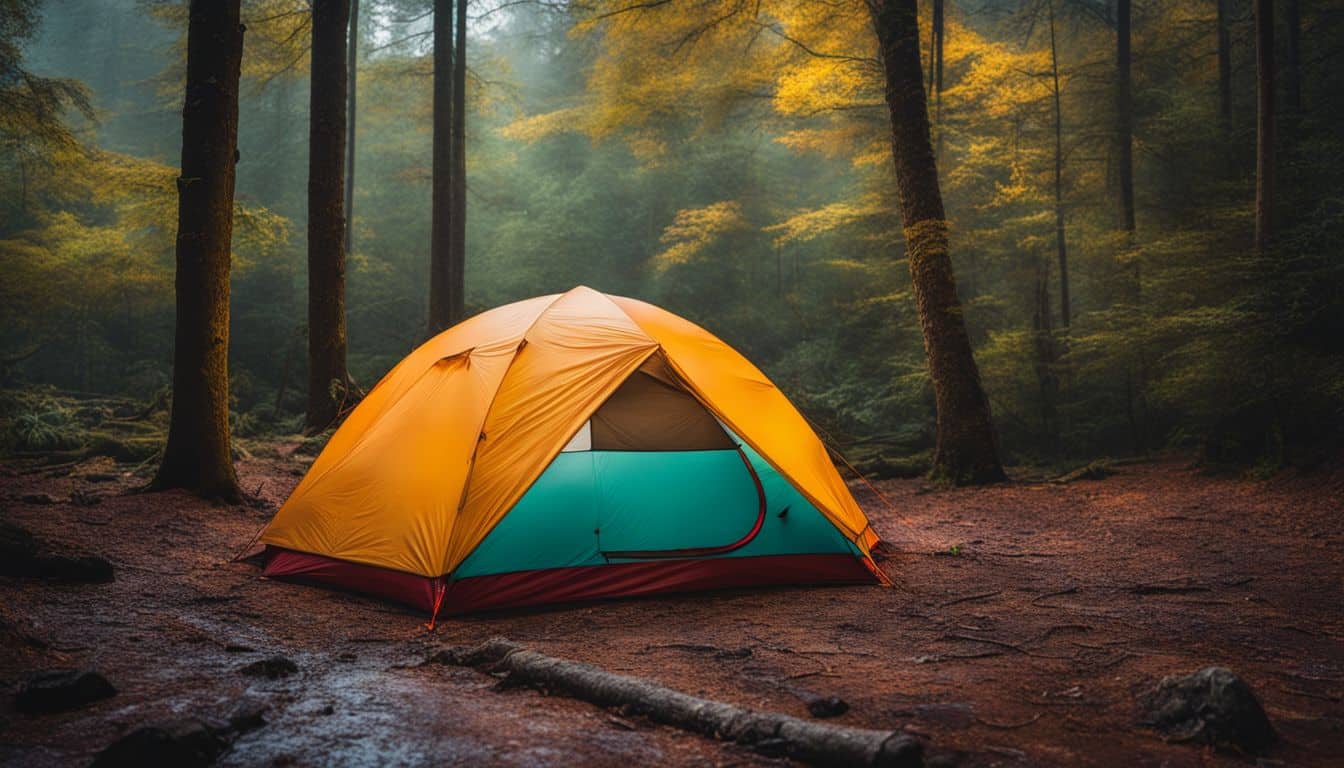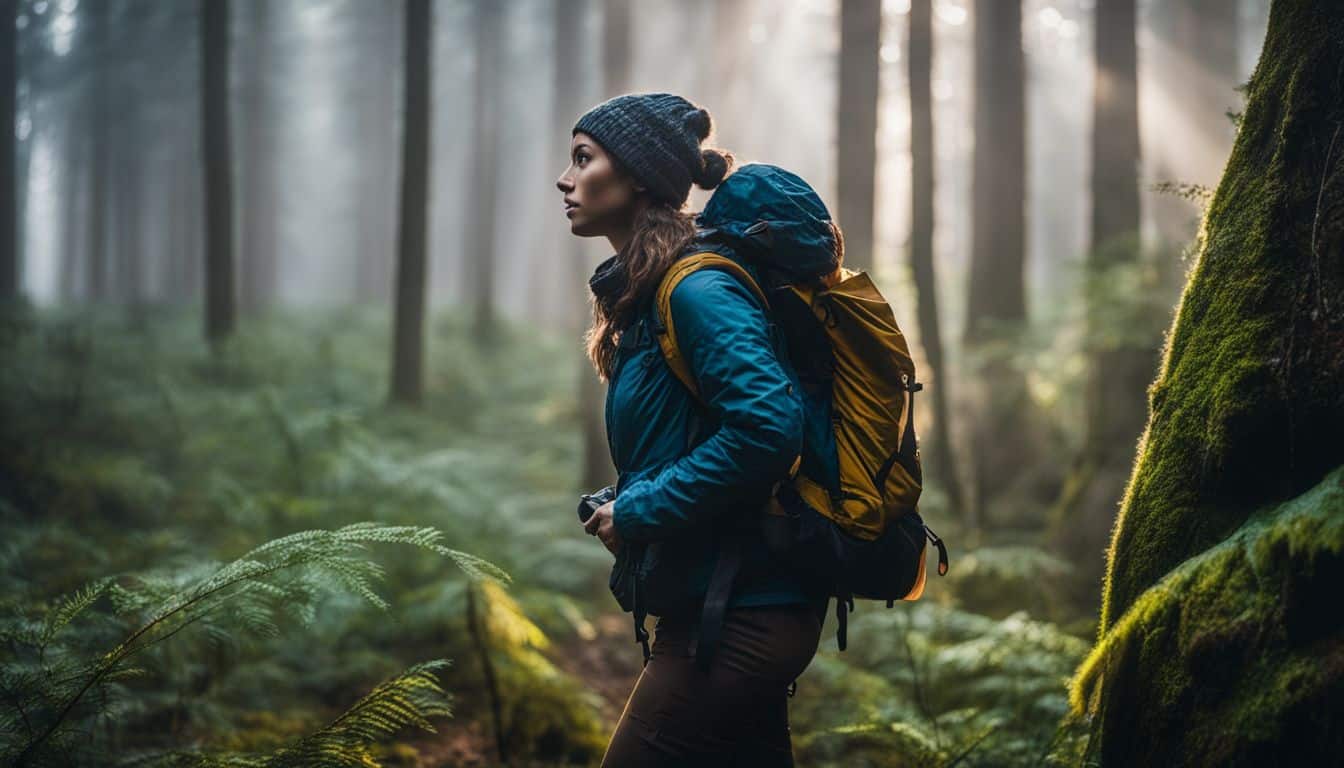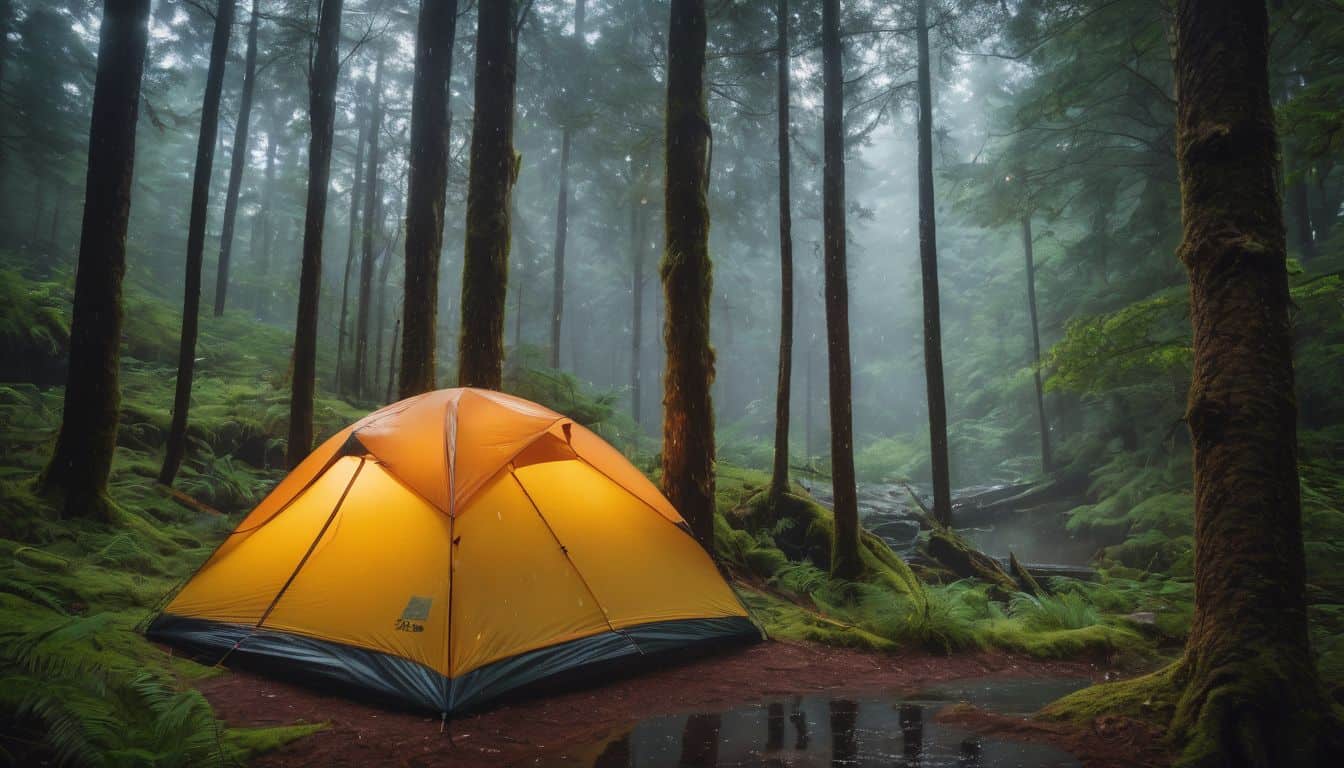Camping in rainy weather can be a challenging but rewarding experience. With proper preparation and the right strategies, you can stay dry and comfortable and enjoy the unique atmosphere that rain brings to the outdoors. This guide will help you navigate the ins and outs of camping in wet conditions.
Introduction
While many campers prefer sunny skies, rainy weather camping offers its own charm. The key to enjoying a wet camping trip lies in thorough preparation and having the right gear. Whether you’re urban camping and exploring cities or embarking on mountain camping and high-altitude adventures, being ready for rain is essential.
Rainy weather can transform landscapes, creating misty forests and swollen streams that offer unique photographic opportunities and a serene atmosphere. The sound of rain on your tent can be soothing, and the fresh, clean air after a rainfall can invigorate your senses. With proper preparation, you can turn what might seem like a camping challenge into a memorable and enjoyable experience.
Essential Gear for Rainy Weather Camping
Quality Rain Gear
Invest in waterproof and breathable raincoats and pants. Ensure they fit well and provide adequate coverage. Look for gear made with materials like Gore-Tex or eVent that offer both waterproofing and breathability. A good rain jacket should have sealed seams, a sturdy hood, and adjustable cuffs to keep water out. Rain pants should be easy to put on and take off over boots.
Waterproof Footwear
Choose boots with good traction and consider gaiters for added protection. Waterproof hiking boots are essential for keeping your feet dry on wet trails. Look for boots with a waterproof membrane and a tread pattern designed for slippery conditions. Gaiters provide an extra layer of protection, preventing water from entering your boots from the top and keeping your lower legs dry.
Dry Bags and Waterproof Containers
Use these to protect essential items and electronics from moisture. Dry bags come in various sizes and are perfect for storing clothes, sleeping bags, and electronics. For smaller items like phones, wallets, and cameras, consider using waterproof cases or pouches. These not only protect against rain but also accidental submersion in puddles or streams.

Choosing and Setting Up Your Campsite
Selecting a Dry Location
Pick high ground away from potential flooding areas and avoid spots under trees prone to falling branches. Look for slight slopes or elevated areas where water will naturally drain away from your tent. Be cautious of camping in low-lying areas or near water sources that could swell with heavy rain. While trees can provide some shelter, be aware that wet branches are more likely to break and fall, so maintain a safe distance.
Proper Tent Setup
Use a groundsheet under your tent and ensure proper staking and guy lines for stability. A groundsheet or footprint helps prevent water from seeping through the tent floor. When setting up your tent, make sure it’s taut to allow water to run off easily. Use all available guy lines to increase stability in windy conditions. Consider creating small trenches around your tent to divert water flow, but be sure to fill these in before leaving to minimize environmental impact.
Creating Additional Shelter
Set up tarps or awnings for communal areas to expand your dry space. A well-positioned tarp can create a comfortable area for cooking, eating, or socializing outside of your tent. Consider using multiple tarps at different heights to create a more extensive dry zone. Experiment with various configurations to maximize coverage and water runoff. Some campers prefer lightweight, specially designed rain shelters that offer more headroom and stability than traditional tarps.
Keeping Your Gear Dry
Organize your gear inside the tent using dry bags and plastic bins. For outside storage, use waterproof stuff sacks for backpacks. Within your tent, create a system where wet gear is kept separate from dry items.
Use a combination of hanging gear from internal tent loops and storing items in waterproof containers. For gear that must remain outside, consider using a separate tarp shelter or your vehicle if available. Regularly check and reorganize your gear to ensure nothing is accidentally getting wet.
Managing Moisture Inside the Tent
Proper ventilation is key to reducing condensation. Use tent vents and vestibules effectively. Open vents even when it’s raining to allow air circulation. In the morning, wipe down any condensation from the tent walls with a small towel or sponge. You might want to bring a small battery-operated fan to improve air circulation. If possible, avoid bringing wet gear inside the sleeping area of the tent.
Rainy Day Activities and Comfort
Plan shelter-based activities like games or reading. When venturing out, wear appropriate clothing for wet weather hikes. Bring waterproof playing cards, books in waterproof cases, or portable board games.
Consider the rain as an opportunity to observe nature differently – watch for increased animal activity or study the patterns of raindrops on leaves. If hiking, be extra cautious on slippery trails and bring trekking poles for added stability.
Cooking and Eating in the Rain
Set up a dry cooking area using tarps or dedicated shelters. Plan meals that are easy to prepare in wet conditions. Consider using a camp stove that performs well in wind and rain. Pre-package ingredients in waterproof containers to minimize prep time in wet weather.
Have a designated area for storing food that’s protected from rain and wildlife. Remember to practice safe cooking techniques, especially when using stoves under shelter.
Safety Considerations
Stay aware of weather forecasts and understand the risks associated with prolonged rain. Be prepared to treat common rain-related issues like hypothermia. Know the signs of hypothermia and how to treat it.
Be cautious of rising water levels in streams and rivers. Have an emergency plan in case of severe weather, including knowledge of the nearest safe shelter. Always inform someone of your camping plans before heading out.

Post-Rain Care and Maintenance
After your trip, properly dry out all gear to prevent mold and mildew. Inspect equipment for any damage or leaks. Set up tents and sleeping bags in a dry, well-ventilated area to air out completely. Clean and reproof rain gear as needed. Check tent seams and repair any damage promptly. Proper post-trip care will extend the life of your gear and ensure it’s ready for your next rainy adventure.
Conclusion
With the right preparation, camping in rainy weather can be an enjoyable and unique experience. Embrace the atmosphere and be ready to adapt to changing conditions.
For those interested in extreme weather camping, check out our guide on winter camping and staying warm in snow for more specialized tips.
Remember, the key to a successful rainy camping trip is preparation, the right gear, and a positive attitude. Happy camping!

Leave a Reply